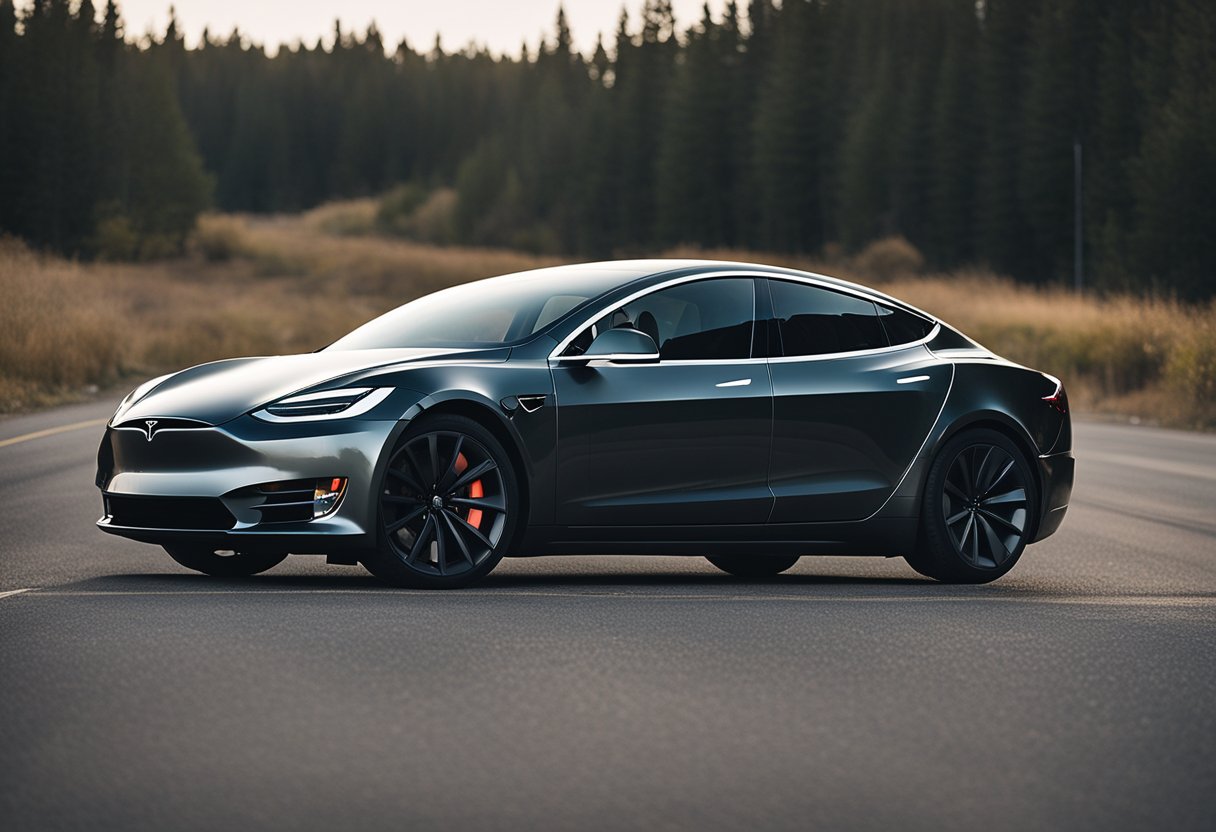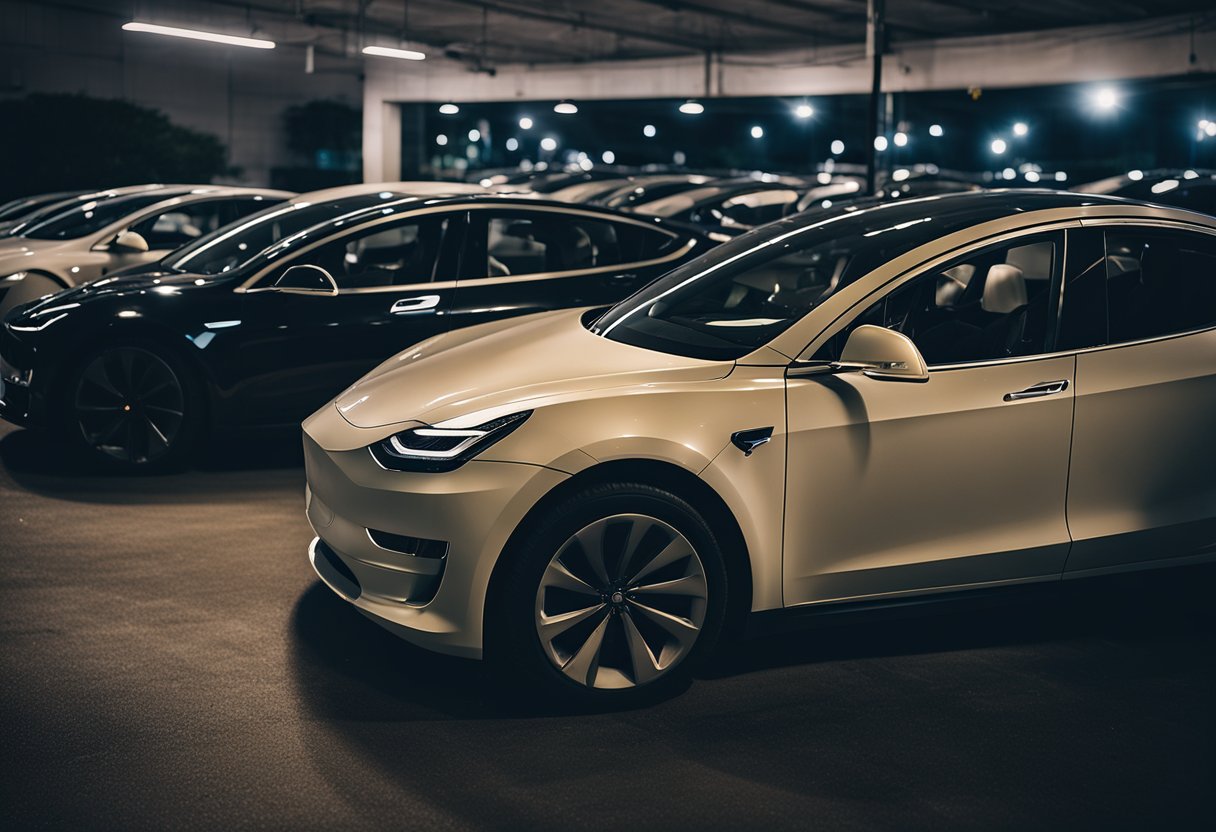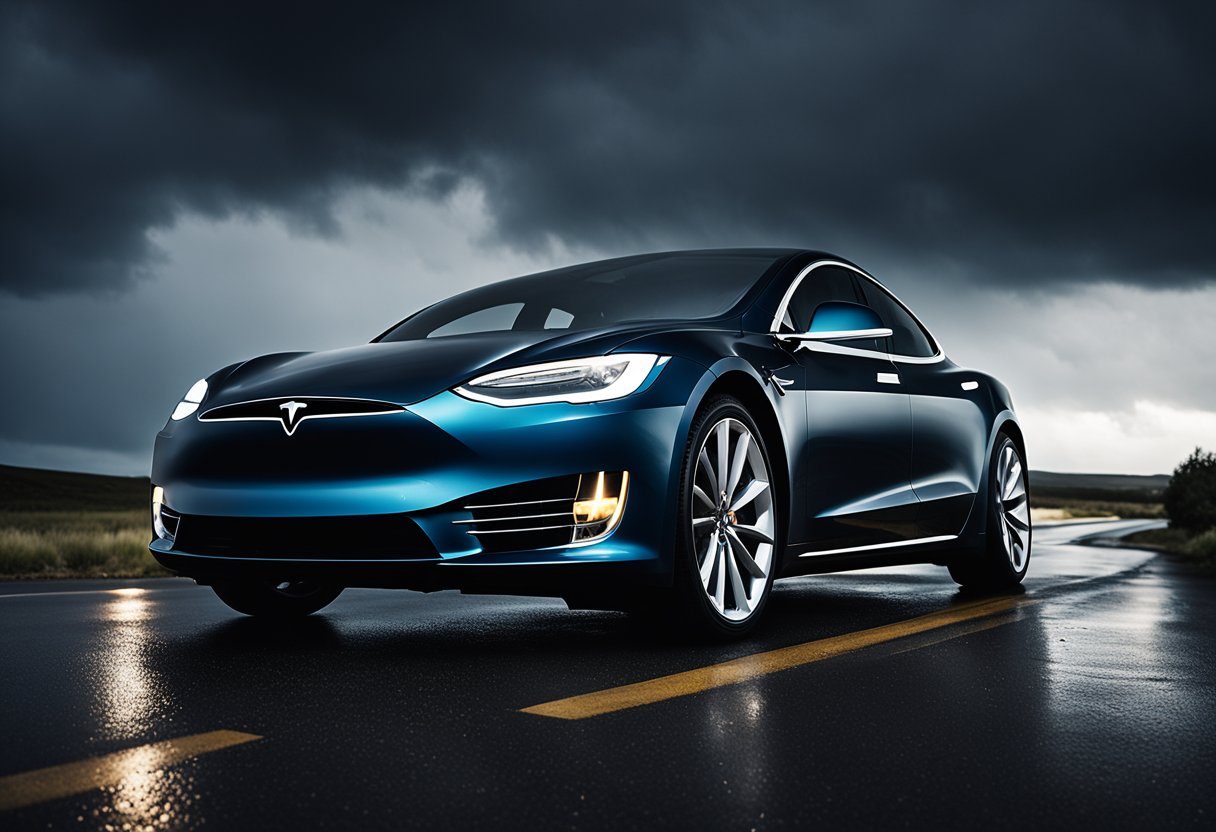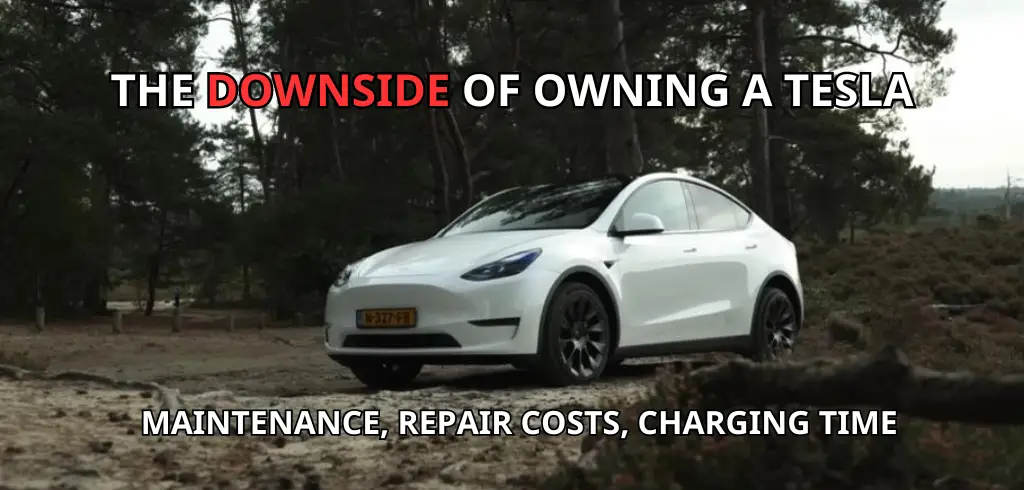If you’re considering purchasing a Tesla, it’s important to be aware of both the positives and negatives of owning one. While Teslas are known for their innovative technology, eco-friendliness, and sleek design, there are also several drawbacks to owning one. In this article, we’ll explore the negatives of owning a Tesla so that you can make an informed decision about whether it’s the right choice for you.

One of the biggest negatives of owning a Tesla is the initial investment and steep price. While the cost of the car may be worth it in the long run due to savings on gas and maintenance, the upfront cost can be a major barrier for many people. Additionally, while Tesla’s Model 3 is more affordable than other models, the company’s other models can be quite expensive.
Another potential negative of owning a Tesla is the maintenance and repair costs. While Teslas require less maintenance than traditional gas-powered cars, they can still be expensive to repair if something goes wrong. Additionally, because Teslas are relatively new to the market, there may be fewer mechanics who are trained to work on them, which can make repairs even more costly.
Table of Contents
Initial Investment and Steep Price
When it comes to purchasing a Tesla, one of the most significant negatives is the initial investment. According to Investopedia, the manufacturer’s suggested retail price (MSRP) for a new 2023 Tesla Model 3 standard range sedan is $39,900, while the Model S starts at $79,990, and the Model X starts at $89,990. The price goes up to $59,990 for the long-range Model 3 and up to $119,990 for the Model S Plaid+.
While the cost of owning a Tesla can be offset by the savings on fuel and maintenance, the initial investment can still be a significant barrier to entry. However, it is essential to note that Tesla offers various financing options, including leasing, loans, and cash purchases, to make the investment more manageable.
Another factor that makes owning a Tesla a steep price is the cost of charging. While Tesla Superchargers are faster than most other charging stations, a full charge can still take 30-60 minutes, as opposed to about 5 minutes for a gas-powered vehicle. According to EVANNEX, a full charge at a Supercharger can cost between $15 and $25, depending on the state and the time of day.
In conclusion, while the initial investment and steep price of owning a Tesla can be a significant barrier to entry, it is essential to consider the long-term savings on fuel and maintenance. Additionally, Tesla offers various financing options to make the investment more manageable.
Maintenance and Repair
Owning a Tesla can be a great experience, but it’s important to understand the maintenance and repair costs associated with owning one. While Teslas require less maintenance than traditional gas-powered cars, they are not maintenance-free.
Maintenance
Routine maintenance for a Tesla includes tire rotations, brake fluid replacement, and air conditioning service. While these costs are relatively low, it’s important to note that Tesla recommends annual maintenance, which can add up over time. Additionally, Tesla’s mobile service program can be convenient, but it’s important to note that some services may require a visit to a Tesla service center.
Repair Costs
One of the biggest concerns with owning a Tesla is the potential for high repair costs. While Teslas are known for their reliability, repairs can be expensive due to the high cost of parts and the specialized training required to work on them. Additionally, Tesla’s build quality has been a topic of discussion, with some owners reporting issues such as paint defects and panel gaps.
Longer Repair Time
Another potential downside of owning a Tesla is the longer repair time. Due to the specialized nature of Tesla repairs, it can take longer to get your car back on the road after an accident or other issue. This can be frustrating for owners who rely on their cars for daily transportation.
In conclusion, while Teslas are generally reliable and require less maintenance than traditional gas-powered cars, it’s important to understand the potential costs and repair times associated with owning one. By being aware of these factors, you can make an informed decision about whether a Tesla is the right choice for you.
Charging and Range
One of the most significant concerns of owning an electric car, including a Tesla, is charging and range. Tesla cars require charging, just like any other electric vehicle. However, it is essential to note that Tesla has an extensive network of Supercharger stations that can significantly reduce the time it takes to charge your car.
Tesla Supercharger Network
Tesla has an extensive network of Supercharger stations located across the United States, Europe, and Asia. These stations are designed to recharge your car quickly, allowing you to get back on the road in no time. The Supercharger network is a significant advantage of owning a Tesla, as it makes long-distance travel much more accessible.
Charging Time
Charging time is one of the most significant concerns for electric car owners. The time it takes to charge your car can vary depending on several factors, including the battery size and the charging source. Tesla’s Superchargers are incredibly fast, and you can expect to get up to 170 miles of range in just 30 minutes of charging.
Charge at Home
You can also charge your Tesla at home using a standard 120-volt outlet. However, charging your car at home using a standard outlet can take a long time. It is recommended that you install a 240-volt outlet in your garage for faster charging times.
Range
The range of your Tesla will depend on several factors, including the battery size and driving conditions. Tesla’s Model S Long Range can travel up to 405 miles on a single charge. However, it is essential to note that factors such as cold weather and driving at high speeds can reduce your car’s range.
Charging Stations
In addition to Tesla’s Supercharger network, there are also many other charging stations available for electric car owners. These stations can be found at various locations, including shopping centers, hotels, and parking garages. However, it is essential to note that not all charging stations are created equal, and some may take longer to charge your car than others.
In conclusion, charging and range are significant concerns for electric car owners, including Tesla owners. However, Tesla’s Supercharger network and the ability to charge your car at home make owning a Tesla much more accessible. With the right planning, charging your Tesla should not be a significant concern.
Software and Technology
When it comes to owning a Tesla, software and technology are two of the most significant selling points. However, there are also some negatives to consider.
Software Updates
One of the most significant advantages of owning a Tesla is the frequent software updates. These updates improve the car’s performance and add new features, making it feel like you have a brand new car every few months.
However, these updates can also be a double-edged sword. Some updates have been known to cause issues, such as reduced range or connectivity problems. While these issues are usually resolved quickly with subsequent updates, they can be frustrating in the moment.
Autopilot and Full Self-Driving (FSD) Beta
Another significant advantage of owning a Tesla is the advanced technology, including Autopilot and FSD Beta. Autopilot is an advanced cruise control system that can handle steering, acceleration, and braking on the highway. FSD Beta takes things a step further, allowing the car to navigate city streets and even perform tasks like parking itself.
While these features are undoubtedly impressive, they are not perfect. You still need to pay attention to the road and be ready to take over at any time, and there have been reports of accidents caused by overreliance on Autopilot.
Connectivity
Tesla’s advanced technology also requires a strong internet connection to function correctly. While this is usually not a problem, there have been reports of connectivity issues, particularly in areas with poor cell service. If you live or work in an area with spotty internet coverage, you may experience issues with your Tesla’s software and technology.
In summary, Tesla’s software and technology are undoubtedly impressive, but there are also some negatives to consider. Frequent software updates can be both a blessing and a curse, and Autopilot and FSD Beta are not perfect. Additionally, connectivity issues can be a problem in some areas.
Aesthetics and Design

When it comes to aesthetics and design, Tesla vehicles are often praised for their sleek and modern appearance. The Model S, for example, has a distinctive look that sets it apart from other luxury sedans on the market. The Model X, on the other hand, features a unique falcon-wing door design that is both practical and eye-catching.
One of the standout features of Tesla’s design is the glass roof. This gives the interior a spacious and open feel, allowing natural light to flood the cabin. The glass roof also provides a unique view of the sky, which can be a pleasant experience for passengers.
However, some people may not find the design of Tesla vehicles to their liking. Beauty is subjective, and what one person finds beautiful, another may not. Some people may find the design too futuristic or unconventional, while others may simply prefer a more traditional look.
It’s worth noting that the sleek design of Tesla vehicles comes at a cost. The low-slung design of the Model S and Model X can make it difficult to get in and out of the car, especially for taller individuals. Additionally, the low profile of the car can make it more susceptible to damage from speed bumps and steep driveways.
Overall, the aesthetics and design of Tesla vehicles are a matter of personal preference. While some people may find them beautiful and innovative, others may not be as impressed. Ultimately, it’s up to you to decide whether the design of a Tesla vehicle is right for you.
Conclusion

Overall, owning a Tesla has both advantages and disadvantages. While the car is known for its efficiency, safety, and low carbon footprint, there are some cons of Tesla ownership that you should consider before making the investment.
One of the biggest disadvantages of owning a Tesla is the price tag. Teslas are generally more expensive than traditional gas-powered cars, which can make them less accessible to some consumers. In addition, repairs and maintenance can also be costly, especially if you need to replace the battery or other parts.
Another potential drawback of owning a Tesla is the need for frequent software updates. While these updates can improve the car’s performance and add new features, they can also be time-consuming and frustrating if you’re not tech-savvy.
In terms of environmental impact, Teslas are generally considered to be more eco-friendly than gas-powered cars. However, the production of electric car batteries can be resource-intensive and may have a significant carbon footprint. Additionally, if you live in an area where the electricity is generated from fossil fuels, the environmental benefits of owning a Tesla may be diminished.
Overall, the decision to own a Tesla is a personal one that depends on your individual needs and priorities. While the car has many benefits, it’s important to weigh the pros and cons of owning a Tesla before making a decision.
Frequently Asked Questions
How does the resale value of a Tesla compare to other cars?
Tesla vehicles have a high resale value compared to other cars in their class. According to Cyberbackpack, “Teslas retain their value better than any other car brand, including luxury brands like BMW and Mercedes-Benz.” This is due in part to the fact that Tesla vehicles are in high demand and have a reputation for being reliable and technologically advanced.
What are the maintenance costs associated with owning a Tesla?
One of the benefits of owning a Tesla is that they require less maintenance than traditional gas-powered cars. According to ProVsCons, “Tesla cars have fewer moving parts and don’t require oil changes or other routine maintenance that traditional cars need.” However, if something does go wrong with your Tesla, the repair costs can be higher than with a traditional car due to the specialized technology and parts.
What are some potential drawbacks of owning a Tesla?
While there are many benefits to owning a Tesla, there are also some potential drawbacks to consider. One of the main concerns is the range anxiety that some people experience due to the limited range of electric vehicles. Additionally, charging times can be longer than filling up a gas tank. Another potential drawback is the high cost of purchasing a Tesla compared to other cars in its class.
Are there any tax benefits to owning a Tesla?
Yes, there are tax benefits to owning a Tesla. According to Honest Pros and Cons, “Tesla owners can take advantage of federal and state tax incentives, including a federal tax credit of up to $7,500 and state incentives that vary by location.” However, these incentives are subject to change and may not be available in all areas.
How does owning a Tesla compare to owning a traditional gas-powered car?
Owning a Tesla is different from owning a traditional gas-powered car in several ways. One of the main differences is the need to charge the vehicle rather than fill it up with gas. Additionally, Tesla vehicles have more advanced technology and features compared to traditional cars. However, there may be some adjustments needed in terms of charging infrastructure and maintenance costs.
What are the long-term costs of owning a Tesla?
The long-term costs of owning a Tesla can vary depending on factors such as the cost of electricity in your area and the cost of repairs. However, according to Business Insider, “Tesla owners report lower operating costs compared to traditional gas-powered cars due to the lower cost of electricity and fewer maintenance requirements.”
